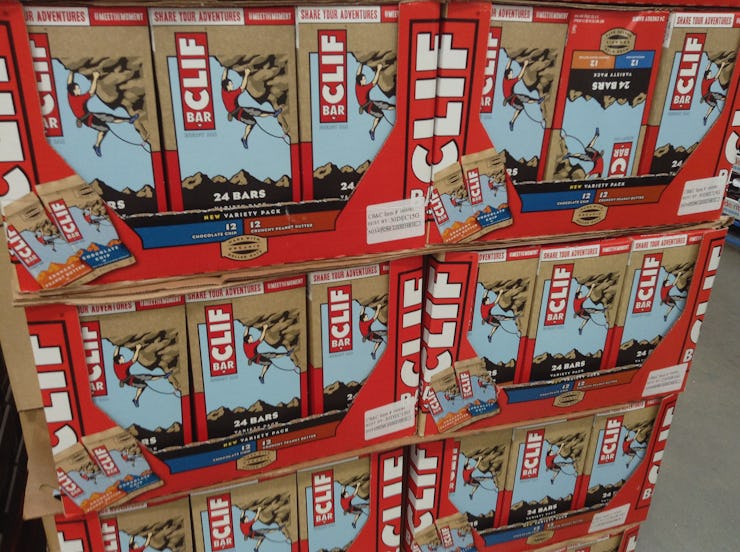You're Getting Fat on Fitness Foods
The guy on the label is ripped because he's active, not because he's snacking.

When you’re craving snacks, grabbing a Clif Bar instead of a bag of Lays feels like an accomplishment. You made the healthy choice. It’s going to help you shed that muffin top. Good job, you.
Unfortunately, research now shows that we eat more of those bars because they’re branded as fitness foods and, on top of that, we’re also more likely to view eating fitness foods as a replacement for exercise. And it is, in the way that a quivery tummy is a replacement for defined abs.
Researchers at Technische Universität München and Pennsylvania State University found that fitness branding — like the yoga poses on a Luna Bar, the ripped Clif Bar mountain climber, or even just the “power” in Powerade — actually encouraged consumers to eat more and exercise less. In their study on people who are chronically concerned about their weight (“restrained eaters”), people were given the option to eat trail mix packaged in one of two ways: marked either as regular trail mix or as “Fitness” mix — complete with running shoes on the label. They were told to pretend they were about to choose an afternoon snack. Perhaps not surprisingly, people who were actively trying to lose weight ate way more of the fitness mix.
In another part of the study, people were given the option to exercise on a stationary bike after eating their snacks. People who ate the fitness snacks ended up burning way fewer calories than those who ate the regular ones.
“Unless a food was forbidden by their diet, branding the product as ‘fit’ increased consumption for those trying to watch their weight,” write authors Joerg Koenigstorfer and Hans Baumgartner. “To make matters worse, these eaters also reduced their physical activity, apparently seeing the ‘fit’ food as a substitute for exercise.”
It seems the current state of fitness marketing — heavy on imagery, light on motivation — can actually trick us into becoming unhealthier. Sports drinks have been under scrutiny for years because they’re often as sugary as soft drinks, yet they’re marketed as fitness-boosters.
The authors suggest that marketers take this into account, perhaps by actively adding exercise tips to labels instead of just including exercise-related images. You, the buyer of bars and sipper of sports drinks, should in the meantime remember that even foods with skinny yoga people on the package will go straight to your hips, if you eat too much of it.